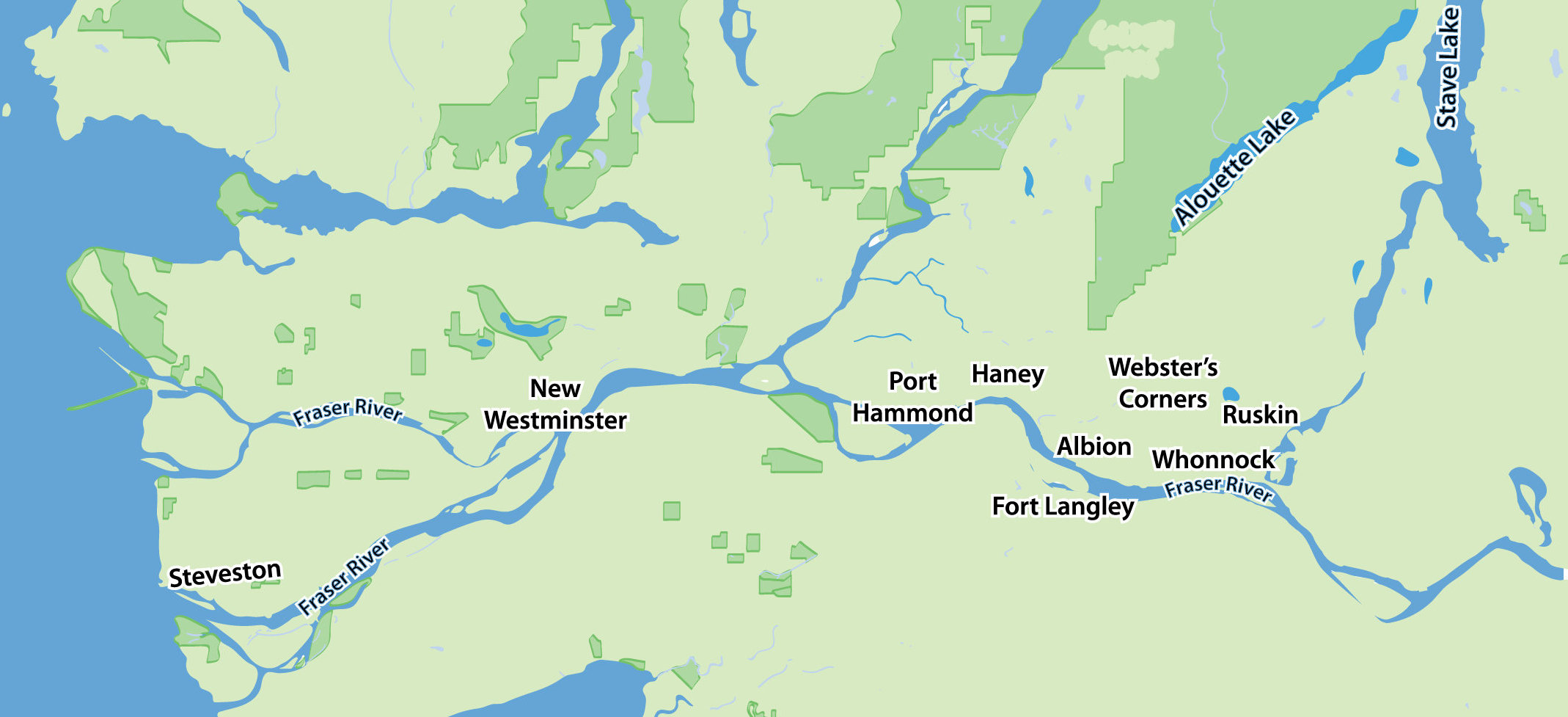Fish have long been a food staple and a lucrative commodity along the Fraser River. The river has served many purposes to the communities who have lived along its route though, a quick glance at the 1891 Canadian census does not reflect the importance of the Fraser River and the fishing in the economy of Maple Ridge—only about ten percent of the employed adult men of Maple Ridge listed their occupation as fisherman.
Stó:lō —The Fraser River
With a length of 1,375 km the Fraser River is the longest river within British Columbia, Canada, rising at Fraser Pass near Blackrock Mountain in the Rocky Mountains and flowing into the Strait of Georgia and the Salish Sea. It is home to many fish species including white sturgeon, stickleback, eulachon, pacific salmon and trout. The first recorded settlements of xʷməθkʷəy̓əm (Musqueam), Stô:lō, St’at’imc, Secwépemc and Nlaka’pamux people are along the Fraser River. The river’s name in the Halq’eméylem language is Stó:lō.
The newcomers named the river after Simon Fraser, who explored the river in 1808 on behalf of the Northwest Company. The Fraser River was the essential route between the Interior and the Lower Coast after the loss of the lands south of the 49th Parallel with the Oregon Treaty of 1846; the route for prospectors during the Fraser Canyon Gold Rush and the main vehicle of the province’s early commerce and industry. The Fraser River was designated a Canadian Heritage River in 1998.
The total population of Maple Ridge in 1891 is 688 people with a mixture of people from around the world including Austria, Barbados, the West Indies, and the United Kingdom. Thirty percent of the total population had been born in British Columbia—this number a mix of people who had been on this land for generations and newcomers. Farming was the most commonly listed as the main source of income with general labourer as the second. Of the 238 adult women only 5 women listed an occupation “besides their share in the work of the family or household.”[i]
The Second Volume of the Census of 1891 states that “fishermen are often also farmers and pursue the two occupations, giving themselves in the Census schedules as farmers because of the relatively greater importance of their vocation on land.”[ii] Despite the fact that fish was recognized as a valuable commodity by all of the residents of what would become British Columbia, British newcomers also brought their cultural attitudes about fishing with them to the West Coast. Fishing for pleasure was a leisure activity for the landed gentry, whereas, fishing for subsistence was viewed as lazy. Even commercial fishing was viewed as taking away from the more desirable agricultural activities. Who were these fishers?
[i] Manual Containing “The Census Act,” and the Instructions to Officers Employed in the Taking of the Third Census of Canada, (1891), Department of Agriculture, 13.
[ii] “Introduction,” Second Volume of the Census of 1891, viii.


Read more…
We acknowledge that the land on which we live, work, and play is the traditional and unceded territory of the Katzie First Nation and the Kwantlen First Nation Peoples. We respectfully honour their traditions and culture.